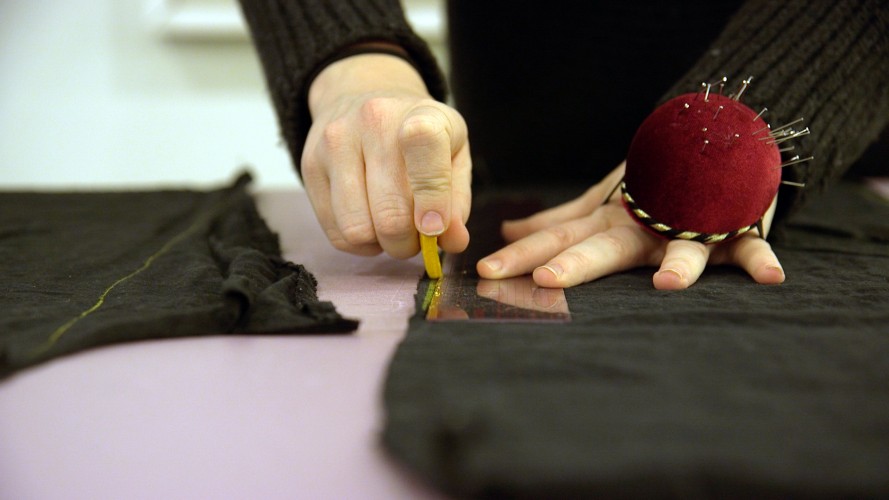This month, Eileen Fisher’s three Social Innovators Teslin Doud, Carmen Gama and Lucy Jones decided to file a joint recap of their latest shared experience:
“About half of the garments that come back through Green Eileen cannot be resold. Our challenge is to come up with a beautiful, scalable and profitable solution for these damaged garments (known as ‘Chop’).
In January, we started working on our project by dreaming really big. We thought about sustainable solutions that, in the future, would leave no garments going to the landfill. From there, we tapped into all the knowledge we gained from our rotations in the company last year to bring ourselves back to an innovative, but realistic solution.
We have come up with two deliverables for ourselves: First, a commercially scalable solution. Thinking into the future of Green Eileen, we want to provide research for scalable upcycling solutions that could deal with bulk Chop when hundreds of thousands of garments are being returned. This research will look into mechanical wool recycling, chemical cotton recycling, and commercial felting. Our hope is that one day there can
be a yarn and/or fabric on the Eileen Fisher main line that is made from Chop.
Our second deliverable is a capsule collection of restored and repurposed garments that demonstrate artisanal upcycling possibilities. While we acknowledge that it may not be realistic to creatively upcycle and resell all of the Chop that is processed through the Green Eileen Recycling Center (GERC), we think that artisanal craft is a great vehicle for storytelling and should always be used for a portion of the Chop inventory.
Throughout February we have been experimenting with craft techniques, and ideating a system that can be put in place and live on after our residency is finished in August. Our goal is to keep
the most value with every garment; with so much thought, energy and money put into these garments during their first life, we don’t think we should be shredding up sweaters that could simply be mended. To relieve the need for a designer to touch every garment, we have created a primary sorting process that will expedite the design decisions. We have made initial decisions so that an artisanal production system can easily create repeatable (but not necessarily replicable) garments.
With this artisanal production system, garments will be initially sorted into three categories: highly damaged, medium damage and lightly damaged. Within each damage category we are currently experimenting with a selection of upcycling techniques to restore garments to saleable quality. Highly damaged garments (and scraps from other processes) can be shredded/cut up and felted to create new fabric for garments and accessories.”



